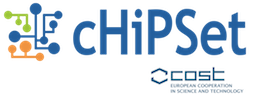|
Name |
Róbert Čunderlík |
|
Affiliation |
Department of Mathematics and Descriptive Geometry, Faculty of Civil Engineering, Slovak University of Technology, Bratislava, Slovakia |
|
Corresponding WG |
WG4 |
|
Grant research topic |
Implementation of the H-matrices in order to reduce a numerical complexity of the boundary integral approaches applied for the high-resolution Earth’s gravity field modelling |
|
Hosting Institution |
Department of Electronics and Telecommunications (DET), Politecnico di Torino, Turin, Italy |
|
Period |
2017-02-05 to 2017-02-17 |
|
Summary of the scientific report |
The aim of the STSM was to implement the Hierarchical Matrices (H-matrices) into the existing boundary integral approaches that are dealing with the high-resolution numerical modelling of the Earth’s gravity field (the topic related to WG4: “HPC-enabled Modelling for Socio-Economical and Physical Sciences” of the cHiPSet COST Action). In order to obtain numerical solutions of “cm-level” accuracy (desired in geodetic community) while processing huge amount of input data, these applications lead to large-scale parallel computations with enormous memory requirements. An implementation of the H-matrices can significantly reduce the numerical complexity of such approaches and thus improve their efficiency.A main achievement of the STSM visit has been the developed program in the MATLAB ® that effectively reduces memory requirements and computational costs in the case of processing the GOCE satellite data using the method of fundamental solutions (MFS). To compress the “far field parts” of the system matrix, the Adaptive Cross Approximation (ACA) algorithm was implemented. The performed numerical experiments have shown that the ACA algorithm gives practically the same results as the standard MFS approach with the full matrix while the memory requirements are several times smaller (depending on the chosen tolerance). Such achievements as well as new expertise acquired during the STSM will help us to improve significantly efficiency of our boundary integral approaches for the Earth’s gravity field modelling that will therefore lead to more precise results. |
|
Personal notes |
Many thanks to Prof. Francesca Vipiana for the perfectly organized STSM visit as well as for all her valuable advices that help me to acquired new expertise. |
